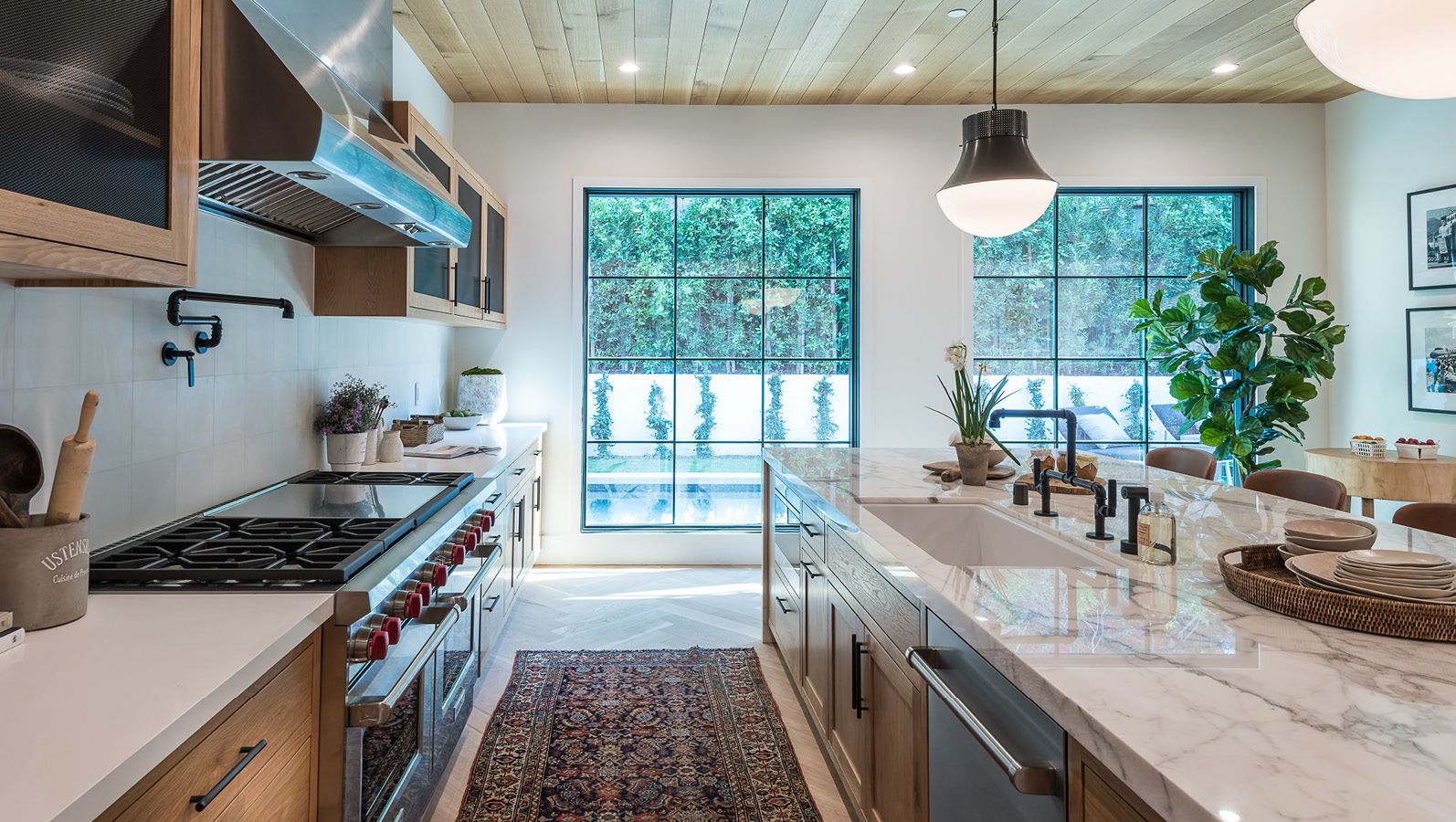How to Prioritize Home Improvement Projects
When viewing homes for sale, home buyers must weigh the cost benefits of newer homes vs. older homes that may need some updating. And if you decided to buy an older home, understanding how to prioritize home improvements is critical to any homeowner.
If you’re like most people, it’s easy to get caught up in how you’ll renovate and improve an existing home. Whether it’s remodeling the kitchen, modernizing the bathroom or adding a hot tub, it’s only natural to want to make the house a “home.”
For some of us, it’s all about value-adding for profit and being able to see a return on investment when it comes time to sell. For others, it’s the challenge of a home improvement project and satisfying a creative need. Whatever the reason for wanting to improve a home, any form of renovation or house addition should be given careful thought.
Before you even touch a paintbrush, it’s important to understand how to prioritize home improvement projects. Ask yourself the “why” question. Why are you renovating? Are you creating your dream home or are you renovating for profit? Your answer will totally dictate how you prioritize your projects.
House Renovation is Booming
According to Houzz.com, home renovation activity and spend are at the highest rates reported since 2018. More than half of homeowners (55%) renovated in 2021, up from 53% in 2020 and 54% in both 2019 and 2018. Following a 15% growth in median renovation spend in 2020, homeowners reported an additional 20% jump in 2021 median spend, which now stands at $18,000.
But all home improvements are not created equal. Bankrate reports that a variety of home renovations offering the greatest returns in resale value were related to curb appeal. In fact, the 2022 Cost vs. Value report from Zonda, a housing market research and analytics firm, found that a new garage door and manufactured stone veneer on the home’s exterior were the favored renovations.
The majority of projects offering the greatest returns in resale value were related to curb appeal.
With people spending more time in their homes during the pandemic and racking up savings (and home equity) during that time, it’s not surprising that many homeowners want to improve their living space. Instead of selling, homeowners are opting to make their residences more livable and enjoyable, accentuating both external improvements as well as indoor amenities that promote both functionality and relaxation.
Prioritize Home Improvements
Many different factors govern our decisions and how to prioritize them. Budget is clearly one. Another is the state of the property when it was purchased. For example, if you’re buying a luxury home, it probably only requires a few tweaks. But if you’re a first-time buyer, the work with a starter, older home may be more substantial.
If your plan is to create your ideal home, you’re less likely to worry about cost. And you’re more likely to indulge your whims.
If you’re renovating for profit, however, you need a completely different approach. In this case, you need to really think about how you select the projects and your budget.
If your plan is to create your ideal home, you’re less likely to worry about cost. And you’re more likely to indulge your whims.
If you’re renovating for profit, however, you need a completely different approach. In this case, you need to really think about how you select the projects and your budget.
Contrary to popular opinion, home improvements are not always about kitchens, new master suites and bathroom remodels. Sometimes the most cost effective and best return for your money improvements are not glamorous and hardly ones you would show off at your next party.
Set a Budget
Nearly one-third of property owners start renovations without having set a budget, while another third exceed their budget.
Your first priority should always be taking care of the fabric of the home — the roof, windows, doors and so on. Prospective buyers want to know the outside elements won’t be getting inside the home. Just for a moment, forget about the cosmetics and consider how the property needs to properly function.
Of course, these types of repairs can really eat into the budget, so shop around for the best deals. Your Usaj Realty broker will have plenty of thoroughly tested vendors for you to get proposals.
With the essentials out the way, you can re-assess your budget, and prioritize your remaining house renovation ideas.
Cost vs. Value
What’s it going to be? New kitchen? New bathrooms? Landscaping? Of course, if money is no object, you can do the whole lot but don’t expect to get it all back! For example, you might think a new kitchen is a must, but research proves otherwise.
The majority of projects offering the greatest returns in resale value are related to the exterior. Nationwide, a garage door replacement topped the most cost effective renovations, recouping 93 percent of the cost. Adding a manufactured stone veneer to the home’s exterior was second at a 91 percent return, followed by a minor kitchen remodel (71 percent), fiber cement siding replacement (68 percent) and tied for fifth was vinyl window replacement and vinyl siding replacement (67 percent).
Although kitchens and bathrooms have typically been the piece de resistance in any home, the pandemic and the fact people have been spending more time at home has shifted focus to other areas of the home. More attention has been focused on outdoor living areas as well as flex spaces/rooms that can serve as home offices and areas for studying.
This redirection of attention to a home’s functionality and flow may not equate to a higher return when selling but many homeowners feel these improvements result in higher quality of living and heightened enjoyment of their home. For most, it’s hard to put a dollar amount on those values but for the homeowner, the enhanced livability is worth the investment, especially if they are planning on being in the home for several years.
Improvements, not Remodeling
What is hopefully becoming clear, is that when renovations are done for profit, it’s important to remove all emotion from the project. Forget about what you would personally like or your favorite colors, and research what actually adds value.
Let’s say you’re working with a $20,000 budget, your priority list should include improvements, rather than remodeling. For example, don’t completely overhaul the bathroom, simply freshen up floor tiles, replace the toilet and add new chrome faucets.
In the kitchen, it’s recommended you update countertops, add new faucets, and improve the sink and disposal unit. That’s right, new appliances are not always necessary!
And sometimes, if you’re looking to move on a property quickly, you might need to focus purely on a good clean and a paint job.
Going Green
Something you may wish to consider are ‘green upgrades’ — projects that make your property more energy/resource efficient. This is a strong selling point, but also very viable should you decide to keep the property.
For example, fitting energy-efficient windows can save you hundreds of dollar each year in heating and cooling costs, and potentially qualify you for tax credits. Furthermore, as outlined above, you can recoup the majority of the cost when you sell.
Projects that should be firmly placed at the bottom of your list include in-ground swimming pools, gourmet kitchens with high-end accessories, additional rooms, and expensive landscaping. While these may appeal to you personally, it’s likely you’ll lose money on these projects when you sell. The only exception might be if you own a luxury home in a high-end neighbor where these amenities are common.
The great thing about buying property in Denver is the variety of home styles and unique architecture. Properties range from cozy bungalows to older homes that are ripe for renovation. Make sure you are familiar with the neighborhood and have a feel for what home improvements have been undertaken by the residents. You don’t want to “over-improve” and price your home out of the local market.
Seek Professional Advice on House Renovation Ideas
The best advice is to talk to a local Usaj Realty real estate broker about home prices and neighborhoods that fit your lifestyle and budget.
The best advice is to talk to a local Usaj Realty real estate broker about home prices and neighborhoods that fit your lifestyle and budget.
Remember, when buying, you have to think beyond the property itself, and consider where the nearest grocery store and shops are located, if there are service providers in the area, closest recreational opportunities and parks, and commute time to work.
(Editor’s note: This blog was originally published in January, 2021. It has been editing and updated to provide current information).





